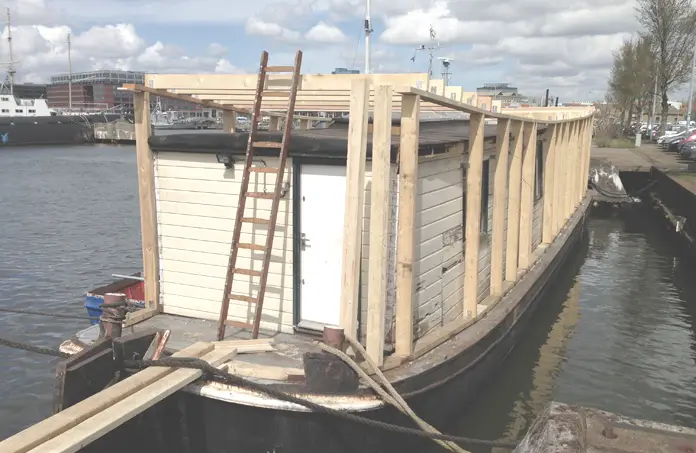Cities have always been faced with uncertainty. By their nature, the people, built environment and many other facets that make up a city are always at risk, regardless of the scale. Understanding these risks, and knowing how to prepare for them, or at least to mitigate them, requires diverse approaches. Foresight and planning is vital, alongside resources to build more resilient cities.
According to a definition by reslientcity.org, a resilient city “is one that has developed capacities to help absorb future shocks and stresses to its social, economic, and technical systems and infrastructures so as to still be able to maintain essentially the same functions, structures, systems, and identity.”
The term resilience is therefore looking beyond sustainability, but incorporating the values of sustainability in every aspect. Furthermore, the inclusion of the social and economic impacts points to the recent major global recession, which devastated many cities, in particular those dependent and reliant on a single sector or industry. Building resilience can therefore look beyond the impact of climate change, and environmental disasters, and begin to factor in the social and economic resilience which can be as important.
According to the Making Cities Resilient Report 2012 by UNISDR, more than 50% of humanity lives in urban centres today and “the increasing concentration of people, economic activities and assets in urban areas usually brings much increased disaster risks and also increasing climate change risks. Cities generate most of the world’s wealth and innovation – but also waste, greenhouse gas pollution and many other causes of climate change and hazards.” The report further highlights the importance of government and governance at all levels, emphasizing the importance of competent local government supported at national level through financial commitments and effective policies.
In New York City the effects of Hurricane Sandy, which devastated large parts of the city, has resulted in the unveiling of a major US$20 billion plan by Mayor Michael Bloomberg. The comprehensive and ambitious report entitled “A Stronger, More Resilient New York,” “analyzes the city’s climate risks and outlines recommendations to protect neighborhoods and infrastructure from future climate events.” The US$20 billion is expected to be financed through a combination of current and future City and Federal funding and relief.
But where does this leave the developing world, where a lack of resources and the impacts of climate change combined can make these cities some of the most vulnerable? . In particular, resilience is given new meaning, when the impacts of climate change, whether disasters, the impacts on agriculture, affects those most vulnerable including the poor, women and other marginalized groups who may lack awareness and the social or financial support systems to adapt or recover from devastation.It becomes clear that in the developing world resilience will have to take on a different meaning or focus. More than addressing infrastructure needs, building resilient cities could look to more practical, community level projects to build awareness and readiness but as important the building of support systems, and networks to deal with inequality and the protection of the vulnerable.
From Cape Town to Cairo, Colombo to Jakarta, cities are becoming more aware of the way in which they can adapt, build better and use foresight and innovation to anticipate the changes of a multi-faceted environment. Their ability to build awareness within communities, work in partnership and gain support from national government level are some of the remarkable ways in which cities in the developing world are become more resilient.
The report shares examples like Cape Town, South Africa where resilience-building partnerships like Climate Smart Cape Town (a partnership between private, public and faith-based organisations whose task is to discuss climate change issues and contribute to city and provincial government adaptation plans) and an alliance between government and NGOs, which resulted in a school-run youth theatre programme, have made significant inroads in helping the city become more resilient.
Another example is Sri Lanka’s national government Disaster Management Ministry, which supports flood control in the capital city of Colombo and a town planning programme. Colombo’s Municipal Council has also created a disaster fund within the annual budget to provide relief services to people affected by disasters.
If resilience is taken to mean that cities should become more independent and self-serving, then it has been misinterpreted. In fact, collaboration and partnerships across a city-region could be vital to the future proofing of a city, especially where borders do not define the areas of risk. The role of government and good governance begins to stand out as one way of making in roads when building resilient cities.
With each city being unique, it therefore becomes important to measure just how effective the investments in building resilience are strengthening the economic, social and physical condition of the city are. Can it be measured in how quickly a city recovers from a disaster, or how its diverse industries cope with an economic recession, or even perhaps the ability of the city’s security and disaster management services to cope with violent riots? And, if the vulnerable are most affected by changes in the environment, how does the measurement of resilience deal with qualitative issues including inequality, gender issues, and even data scarcity?
Join Future Cape Town and This Big City, during our next #citytalk tweetchat in partnership with the Asia Development Dialogue on 17 July at 7PM BST/8PM CEST/2PM EDT. We will seek to unpack the topic of resilience from a number of angles, supporting a more collective understanding of resilience, but at the same time sharing best-case examples from around the world.
Photo: paul bica


